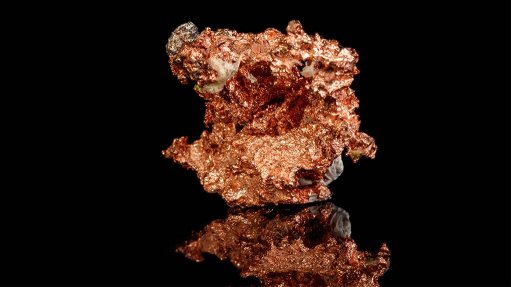
OPTIMISING COPPER MINING The Koryx Copper IP survey will support the copper extraction process at the Luanshya West project in Zambia through drill target generation prior to the initiation of a drilling campaign
Copper-focused explorer Koryx Copper has initiated an induced polarisation (IP) survey programme at its central Zambian Copperbelt-based Luanshya West project, in Zambia.
The IP survey, which will consist of two phases, is a ground electrical geophysical survey, that will assist in drill target generation prior to the initiation of a drilling campaign.
The first phase will include 40.1 km of gradient array IP at 100 m spacing over six targets, totalling up to about 300 ha, that exhibits consistent geochemistry anomalies with a strong copper and cobalt association delineated from a previous soil sampling programme and defined by the interpretation report recently completed by geophysical consultancy Earthmap Consulting.
Earthmap Consulting was mandated to complete the geophysical interpretation of airborne magnetic data available for the Luanshya West project.
Phase 2 will comprise pole dipole over IP anomalies generated by the gradient array, with the survey parameters of pole dipole depending on the geometry of the IP anomalies generated by the gradient array IP.
“This work programme is a critical step toward delineating and prioritising drill targets. [Koryx Copper’s] recently completed review and interpretation of existing geochemical, geological and regional airborne data provided six prioritised zones warranting detailed follow-up groundwork,” says Koryx president and CEO Pierre Léveillé.
He adds that the IP survey will provide valuable subsurface geophysical signatures within these prioritised zones and will support in defining drilling targets for a drill campaign this year.
Earthmap Consulting’s report found that, with the superimposition of Koryx Copper’s latest soil geochemical copper and cobalt results, two styles of mineralisation targets have emerged.
The first style of mineralisation involves a high priority footwall arenite-hosted copper and cobalt soil anomaly with a footprint size similar to the Chibuluma South deposit, as well as 14 km of currently under-sampled Lower Roan Subgroup, where additional footwall arenite-hosted copper and cobalt mineralisation may still be found.
The second style of mineralisation involves five additional copper and cobalt soil anomalies that are situated in upper stratigraphy – Upper Roan Subgroup – and possibly also in the Mwashya Subgroup.
These anomalies may indicate lateorogenic, structurally-controlled copper and cobalt mineralisation; however, the aeromagnetic data is of insufficient resolution to show possible structural controls in all, except one, of these five targets.
As such, Earthmap recommends a follow-up examination on the soil anomalies of all the targets with an IP geophysical survey, followed by drilling on the two anomalies situated over the Lower Roan Subgroup.
Earthmap also recommends the IP programme and a high-resolution magnetics survey followed by drilling for the five other targets.
The Luanshya West project licence is situated in the centre of the Zambian Copperbelt, which forms part of the Central African Copperbelt – one of the most prolific copper belts in the world. The large exploration licence covers 5 423 ha.